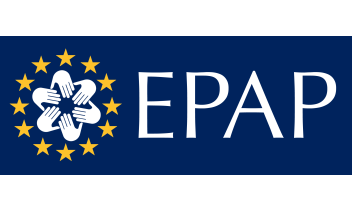
A brief history and achievements of EPAP
A brief history and achievements of EPAP
- EPAP was created to support patients in becoming involved in their own health in an effective and meaningful way.
- EPAP was created by the European Lung Foundation and NIHR CLAHRC (the National Institute of Health Research (NIHR) and Collaborations for Leadership in Applied Health Research and Care (the CLAHRC) in the UK) in 2012 and is now run by its own Patient Advisory Group. There are currently 643 ambassadors registered across Europe. You become an ambassador when you register and complete the relevant parts of the programme.
- For 2 years, feedback from ambassadors was gathered about how they found the programme and what they would change. As a result in 2015 some modules were made more user-friendly and people do now have the choice which modules they want to complete. Another outcome was a decision to translate the programme into other languages, making it easier for people to learn in their own language.
- In the same year we designed a new module on “Participating in healthcare conferences”, which gives an introduction to patients attending scientific conferences and trains people in areas such as presentation skills.
- In October 2015, we launched the Dutch version of the programme. Dutch was chosen as the Netherlands was a country with the greatest number of ambassadors after the UK and we were able to secure a partner organisation who helped translate the modules and is still closely involved in evaluating and recommending EPAP.
- EPAP has been run by a Patient Advisory Group since 2013. In 2016 this was opened up to more members and we now have 20 members who are involved in all decision making relating to EPAP.
- In addition to our existing LinkedIn forum we added a Facebook group, where ambassadors can exchange ideas and communicate with each other earlier in 2016.
- We were also approached by an Italian patient organisation for parents of children with Duchenne muscular dystrophy, who asked us to translate it into Italian. This will be available in March 2017.